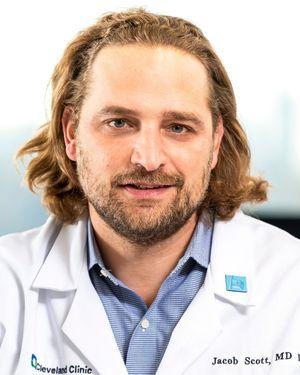Research News
03/06/2024
Revising equations to fight drug resistance in cancer, bacterial infections
The new Cleveland Clinic-developed model incorporates how evolution contributes to drug effectiveness and dosage.

One of the worst situations for a patient undergoing treatment is for a successful treatment plan to stop working. In some cases, a tumor can begin to grow again even though it had been shrinking before. In others, an infection can return even after the initial symptoms responded to antibiotics. In many cases, the reason behind this unexpected change can be counterintuitive: the disease stops responding to medication because of the effects of the medication itself.
A Cleveland Clinic led-research team proposes a solution to this devastating problem, using math. Their research, published in PLOS Computational Biology, improves an established formula that drug manufacturers use to calculate dosage guidelines. The formula determines the tipping point for when medications are more likely to promote resistance than a cure through incorporating evolutionary principles.
Diseases, especially cancers and bacterial infections, are known to evolve and become drug resistant. Both types of cells replicate very quickly and can make a lot of mistakes along the way, leading to genetic mutations that make diseased cells harder to kill. If the mutant cells can't be destroyed by our immune system or a treatment, they are free to replicate, pass on their mutations and repopulate the tumor or infection with treatment-resistant offspring.
"The evolution of drug resistance is one of the most fundamental biological processes facing the healthcare industry, but it's also one of the most poorly understood," says corresponding author Jacob Scott, MD, PhD, Translational Hematology and Oncology Research. "Fortunately, many processes can be reverse engineered, predicted and influenced if we take the time to understand them."
Dr. Scott's research program uses mathematical models and experimental evolution as keys to understanding the biological processes leading to drug resistance. Dr. Scott was previously awarded $2.9 million dollars by the National Institutes of Health to better model how cancer cells can evolve drug resistance over time. Improving these models, he says, informs the way drug developers and healthcare providers make their decisions and ultimately improves the way we administer healthcare.
Under Dr. Scott's mentorship, Eshan King, a Case Western Reserve University MD-PhD student in Dr. Scott's lab, led a team of biomedical engineers, mathematicians, computational and experimental researchers to improve models for the drug dosage that helps cancer cells and bacteria to evolve treatment resistance. This is called a drug's "mutant selection window." The team found that incorporating the rate different drugs travel through our systems and the tumor cells' distance from bloodstreams greatly improved our understanding of the evolutionary process.
"Different cells in a tumor are going to get different doses of a drug, depending on how long it takes the drug to reach those cells from our blood vessels," King explains. "Even if you prescribe someone with a dose of medicine to treat a tumor, not all of the cells in that tumor will get the full dose required for effective therapy."
Incorporating these factors into the equation reveals cells within a tumor or complex infection have different mutant selection windows. The diversity of mutant selection windows may be key to understanding how and why tumors and infections become drug-resistant, King says.
These types of calculations and recommendations inform the way doctors develop treatment plans. Dr. Scott, a radiation oncologist, sees the importance first-hand.
"To make sure our patients have the highest quality of life possible we need to prescribe them doses that are low enough to minimize side effects, but high enough to destroy the cancer cells and prevent them from evolving resistance," he says. "Results like these, that calculate mutant selections windows are critical in making sure we can make safe, effective treatment plans. Improving these models only makes the treatments better."
Featured Experts
News Category
Related News
Research areas
Want To Support Ground-Breaking Research at Cleveland Clinic?
Discover how you can help Cleveland Clinic save lives and continue to lead the transformation of healthcare.
Give to Cleveland Clinic